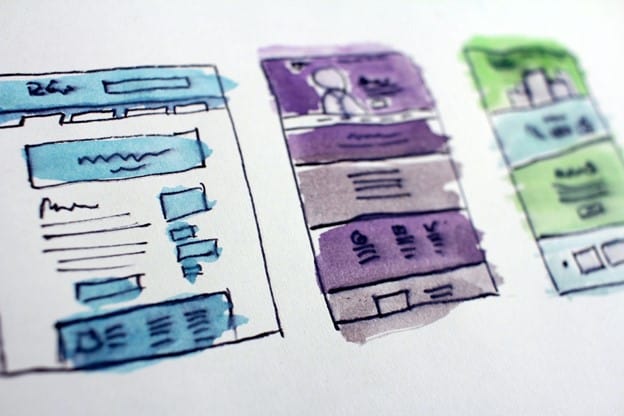
26 Jul UI/UX design for taxi apps: common and optional features
In the dynamic landscape of transportation, taxi booking applications have experienced remarkable growth, with their value estimated to be around $36 billion in 2017. Industry experts anticipate a promising future, projecting a compound annual growth rate (CAGR) of 16.5% until 2025, soaring to an impressive $126,521 million.
 One example of this industry’s exponential growth is Uber, a true trailblazer. Uber’s rapid expansion and global presence have revolutionized the way people travel, serving the transportation needs of millions worldwide.
One example of this industry’s exponential growth is Uber, a true trailblazer. Uber’s rapid expansion and global presence have revolutionized the way people travel, serving the transportation needs of millions worldwide.
Despite the increasing popularity and convenience of rideshare services like Uber, the allure of car ownership remains. It’s important to note that personal vehicle ownership holds its own merits. For some individuals, the sense of freedom, flexibility, and convenience associated with owning a car is indispensable, especially in areas with limited public transportation or specific requirements such as family commuting or transporting goods.
To launch a successful taxi booking application, it is vital to allocate resources not only for mobile app development but also for a well-planned marketing strategy. Effective promotion and marketing campaigns play a pivotal role in creating awareness, attracting users, and establishing a strong foothold in a highly competitive market. By combining a meticulously designed, user-friendly application with targeted marketing efforts, businesses can seize the burgeoning opportunities within the taxi booking industry, positioning themselves for triumph and growth.
Table of Contents
Customer Satisfaction Factor in Online Taxi Mobile App
Customer satisfaction is achieved when the expectations of individuals align with the perceived performance of a product or service. Loyalty, on the other hand, is earned when customers not only make repeat purchases but also recommend the product or service to others. There is a direct positive correlation between customer satisfaction and loyalty, as satisfied customers are more likely to become loyal customers.
An online taxi mobile app is a value-added service that utilizes mobile technology. The quality of information provided by such mobile-based services can be assessed based on three criteria: connection quality, content quality, and interaction quality. Good connection quality ensures minimal errors and a stable network for users. Content quality refers to the completeness, accuracy, urgency, and up-to-dateness of the information provided. Interaction quality encompasses factors like app appearance, menu structure, and user-friendly navigation. IT-based service providers should respond quickly and offer rapid compliance responses. Additionally, having a Frequently Asked Questions (FAQ) feature enables customers to easily and swiftly find solutions to common problems.
Another important feature of a reliable online taxi mobile app is the ability to provide estimations, such as destination location, distance, travel time, and fleet availability. Customers require assurance, particularly regarding the availability of a ride. Therefore, the app should include a real-time fleet availability display and a detection facility to show the closest available vehicles. These factors, among others, contribute to overall customer satisfaction. Satisfied customers are more likely to become loyal, leading to repeated returns and repurchases.
Necessary features for transport app development
API
Application Programming Interface (API) integration allows the taxi application to connect with external services or platforms. This can include integration with mapping services for accurate location tracking, payment gateway APIs for secure transactions, or social media APIs for seamless registration and sharing features. API integration enhances the functionality and interoperability of the taxi application, enabling a more comprehensive and connected user experience.
User Registration
This feature enables users to create an account within the taxi application using their personal information or by leveraging their social media profiles. It allows for a personalized experience, easy access to booking history, and secure authentication for transactions.
Real-Time Tracking
Users can track the location of their assigned driver in real time on a map. This feature enhances transparency and allows users to monitor the progress of their ride, estimated arrival time, and any delays.
Payment Options
Integration with various payment methods, such as credit/debit cards, mobile wallets, or cash, allows users to conveniently pay for their rides. This feature ensures flexibility and caters to users’ preferred payment methods.
Driver Profiles and Ratings
Users can view driver profiles, including their ratings, reviews, and other relevant information, to make an informed decision about their preferred driver. This helps build trust and improves the overall user experience.
Driver Tracking
Drivers can utilize GPS navigation systems integrated into the application to find the optimal route and reach the pickup location efficiently. This feature assists drivers in providing timely service and improving the overall efficiency of the ride.
Notifications
Users receive notifications about ride status updates, driver arrival, and other important information. These real-time updates keep users informed and enhance the overall experience.
Multiple Language Support
The application may support multiple languages to cater to a diverse user base. This feature enhances accessibility and inclusivity for users from different linguistic backgrounds.
Additional nice to have UI/UX design features for mobile taxi app
Search
The taxi application provides an automatic search feature for individual locations, allowing users to easily find their current address without manual input. Additionally, users can search for their desired destination address and select it from the provided options. To enhance the search experience, the application integrates with Google Places, enabling users to access a comprehensive database of locations for accurate and efficient search results. This logical flow ensures that users can effortlessly find their current location, search for their desired destination, and benefit from the vast information available through Google Places integration.
Multiple route
The taxi application offers the convenient ability to select multiple route points. Users can specify multiple locations along their intended route, allowing for a more flexible and personalized journey. This feature ensures that users can easily plan and optimize their trips by adding multiple waypoints or stops to their route. By providing the option to select multiple route points, the application enhances user control and customization, accommodating various stops and detours based on individual preferences and needs.
History
Users can view their previous rides, including details such as pickup and drop-off locations, fare, and driver information. This feature provides a convenient reference for users and allows them to track their ride history.
Car selection
This feature allows users to choose a car that aligns with their specific requirements and preferences. Whether it’s selecting a car based on the number of passengers, luggage capacity, comfort level, or other criteria, the application enables users to make a tailored choice. By offering car selection options, the application enhances the user experience, ensuring that users can find a vehicle that best suits their needs for a comfortable and enjoyable ride.
Around city
The taxi application offers an “around city” function for situations when an order doesn’t specify a specific address. This feature provides users with the convenience of requesting a ride without the need to input a precise address. Instead, users can simply indicate their general location or desired area, allowing the application to identify nearby drivers and facilitate a pickup. The “around city” function enhances user flexibility and simplifies the booking process, making it easier for users to navigate within the city without the need for precise address details.
Split Fare
Users can split the fare with other passengers traveling in the same direction, allowing for cost-sharing. This feature is particularly useful for group travel and encourages sharing economy principles.
Scheduled Rides
Users can pre-book a ride for a later time or date. This feature provides flexibility and convenience for users who want to plan their rides in advance.
Promotions and Discounts
Users can apply promo codes or avail of discounts offered by the taxi service. This feature provides incentives for users and encourages repeated usage of the application.
How much does it cost to create a good UI /UX design for a taxi app?
App design services can vary significantly depending on various factors such as the complexity of features, platform compatibility (iOS, Android, web), development team location, design requirements, and additional services integrated.
It is important to recognize the distinction between UI and UX design. UI design primarily focuses on the visual aspects and aesthetics of the app, such as color schemes, typography, icons, and layout. Meanwhile, UX design revolves around creating a seamless and user-friendly experience by considering factors like ease of use, information architecture, and interaction design.
To create the best UI/UX design for a taxi app, it’s advisable to collaborate with experienced designers who have a strong understanding of mobile app design principles and the specific requirements of the taxi industry. The cost will depend on the scope of work, including wireframing, prototyping, user research, visual design, and iterative testing.
It’s recommended to discuss your specific project requirements with design professionals or agencies to obtain accurate cost estimates. They can provide a tailored quote based on factors such as the desired features, platforms (iOS, Android), design revisions, and any additional services required, such as branding or logo design.
 Remember that investing in a high-quality UI/UX mobile app design is critical, as it directly influences user satisfaction, engagement, and the overall success of your taxi service. Prioritizing a user-centered design approach can significantly enhance the app’s usability and appeal to customers.
Remember that investing in a high-quality UI/UX mobile app design is critical, as it directly influences user satisfaction, engagement, and the overall success of your taxi service. Prioritizing a user-centered design approach can significantly enhance the app’s usability and appeal to customers.



No Comments